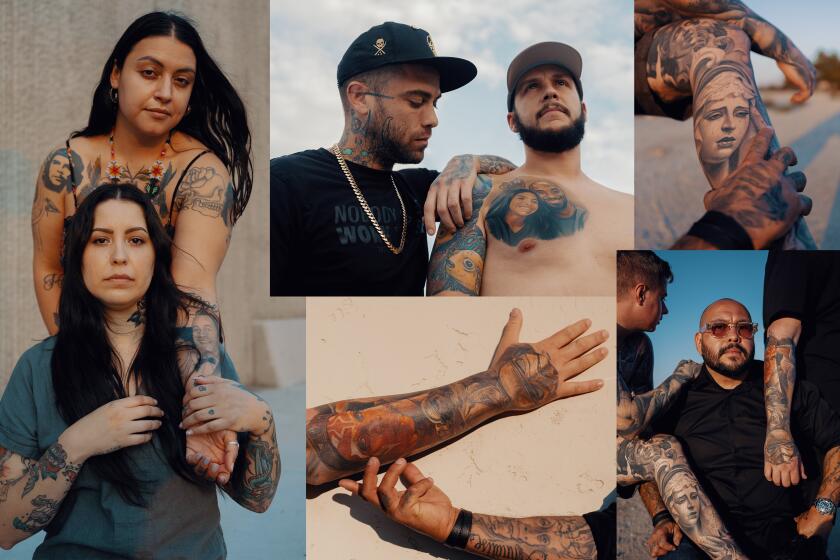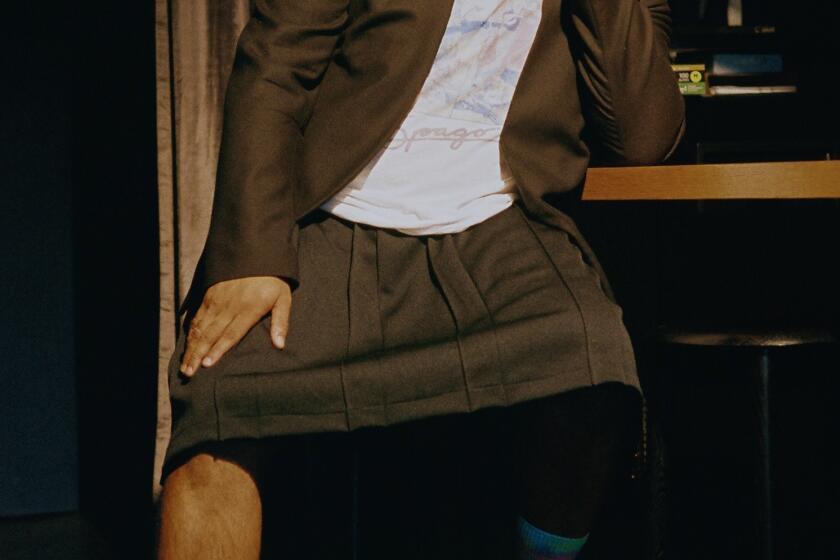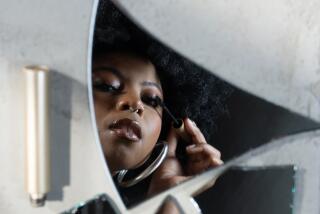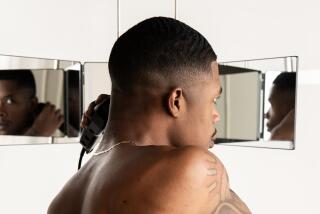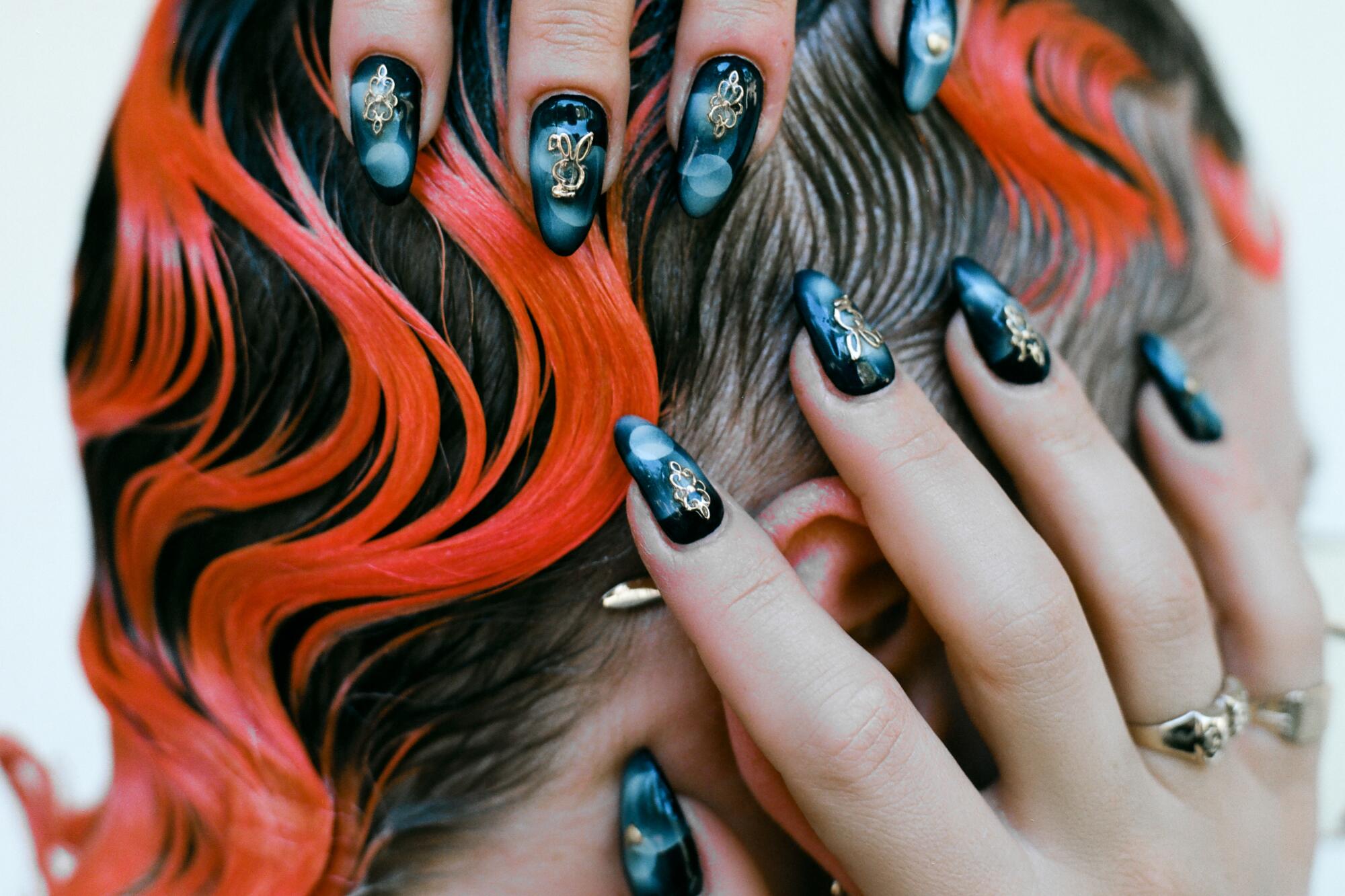
- Share via
This story is part of Image issue 5, “Reverence,” an exploration of how L.A. does beauty. See the full package here.
It’s 2001, and you’re at the house, laying out your fit for the county fair. You’re going for one reason — one reason only — and it ain’t to cuddle with your boo on the Ferris wheel. It’s not for the funnel cake, either (although, admittedly, that might be a factor). It’s for that one person in a booth who is holding a small, gun-like contraption with colored mist squirting out one end. They’re ready to turn your identity into something tangible. All the things that felt like they needed to be enshrined forever — your youth, your AKA, your first love, your homie (RIP) — you brought to them. And they would immortalize these things with a specific technique: airbrushing.
This is how Lila Robles, one of the most celebrated airbrush nail artists on the internet, remembers first falling in love with the art form. “If the county fair doesn’t have an airbrush guy, you don’t go,” she says. “Having anything customized was a power move. It brought your identity to it.” As a teenager growing up in San Jose, Robles connected with the feel of airbrush. Its ability to convey nostalgia, history and culture through a visual language, its dreamy, soft texture — all these things spoke to her.
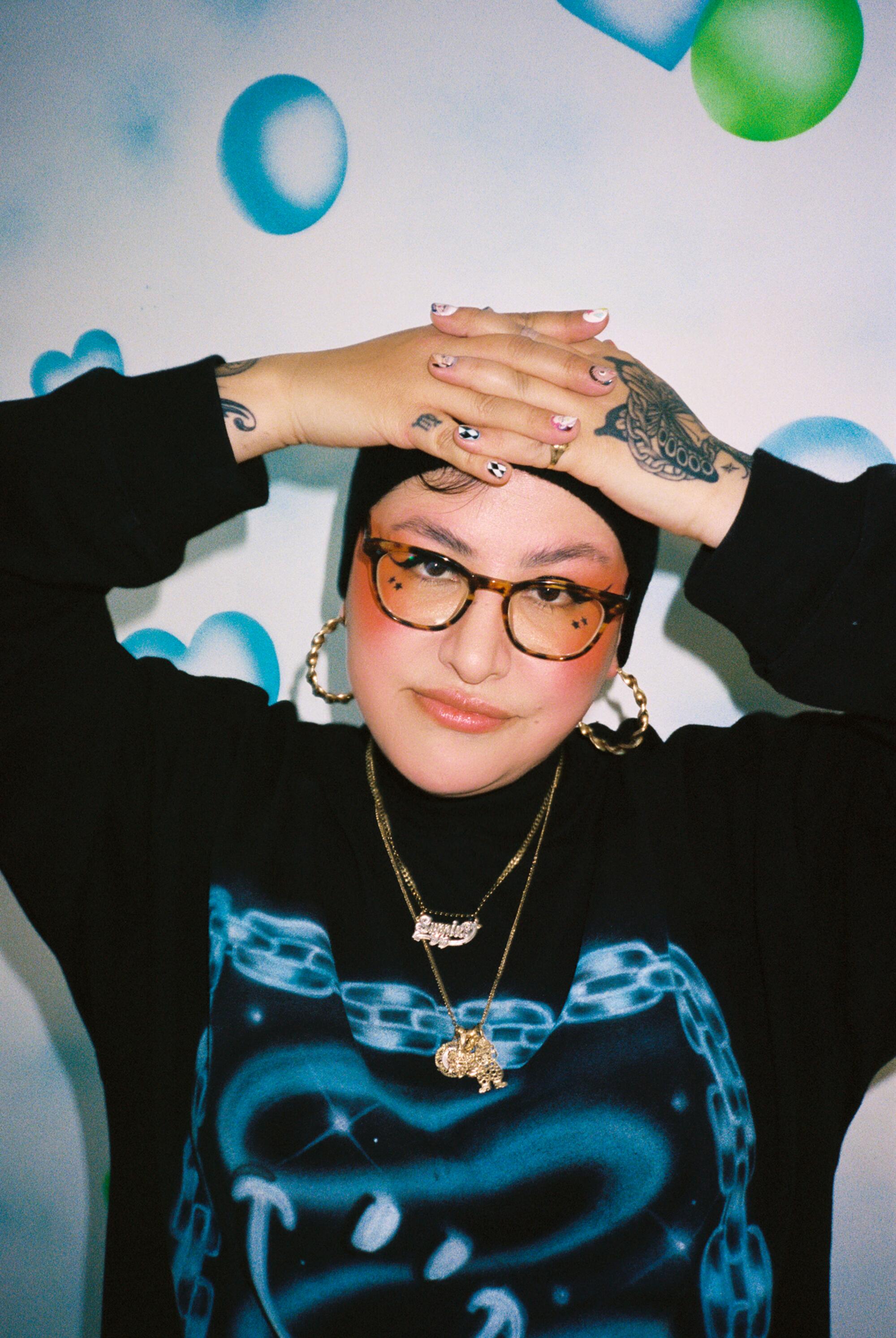
Her personal obsession with airbrushing developed from there. As a young adult, Robles spent a lot of her time searching for innovative or creative renditions of airbrush art — at the Santa Cruz boardwalk, where she once got a shirt with the words “Sad Girl Lila” imprinted on it; at the San Jose Berryessa Flea Market, where resident airbrush artist Everett Regua “still humors me with my weird requests,” she says; on YouTube, where she’d watch for hours as artists turned classic cars into one-of-a-kind masterpieces with soft whooshes of paint. Before attending art school, Robles began getting into airbrush herself — looking for ways to customize her Pontiac Firebirds at the time — but didn’t get far. It required training and a skill she didn’t yet have. After getting her manicurist license, she decided to try again.
Typical airbrush guns — the kind used by artists at the fair or by car painters — are meant for scale, not for tiny surface areas like fingernails. These things all require a different level of control, Robles explains. Even long acrylic nails require a specialized, fine-point airbrush system. Robles found hers — a Japanese airbrush system called Airgel — while attending a nail convention in Japan, and she honed her craft by apprenticing with a Japanese teacher named Motico (@nailartist_motico) for two years. She’s also been taking classes with the Central California-based fine artist and car airbrusher Daniel Barrigas (@barrigasfineart) for the last year, who she says has helped expand her craft.
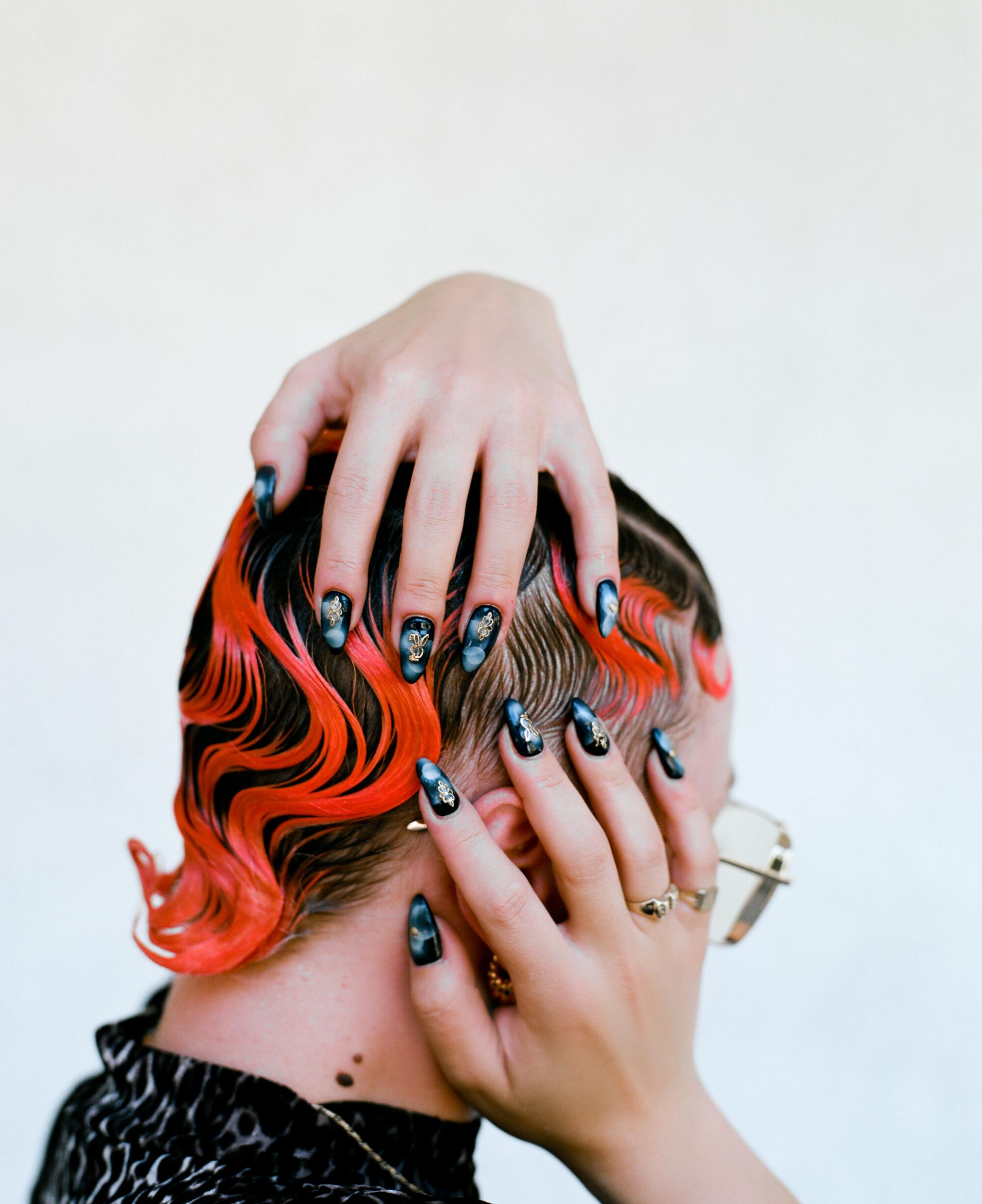
You can see the training in Robles’ body of work on Instagram. Her feed is littered with works of art on tiny canvases in the shape of almonds, sharp stilettos or Fritos — as in, long and curved like the ones your auntie had in the ’90s. Her pieces have a particular depth that extends both visually and symbolically, including motifs inspired by her first-generation Mexican American and Catholic upbringing in the Bay Area, and her Chicanx identity. Some sets are designed with “Smile Now, Cry Later” masks, while others have silver charms in the shape of crosses and angels plastered over an ombre sea of blue and violet. One time, for a nail show, Robles even incorporated a St. Francis rosary into an airbrush design.
Image Reverance stories
Mr. Wash remembers that time Drake slid into his DMs
Julissa James unpacks the art of putting someone’s face on your body
Dave Schilling learns what it means to be beautiful in Comme Des Garçons
Jean Chen Ho explores grief through IG thirst traps
Darian Symoné Harvin dives deep into sideburn style
In L.A., where lowrider culture reigns supreme, a custom 1960 Chevrolet Impala is still cruising slow down Van Nuys Boulevard to show off the intricate airbrush scape on its hood. The dreamy, airbrushed backdrops that made Tom’s One Hour Photo in Koreatown so iconic in the early 2000s gained a newfound popularity a couple of years ago. Airbrush was — and is — everywhere.
Along with doing nails out of her Highland Park studio, Robles is creating custom works through different airbrush mediums and teaches other nail artists how to adopt the practice. “This is very full circle now,” she says. “I had this obsession with the airbrush T-shirts and this obsession with airbrush cars. I romanticize it. It’s so beautiful to me.”
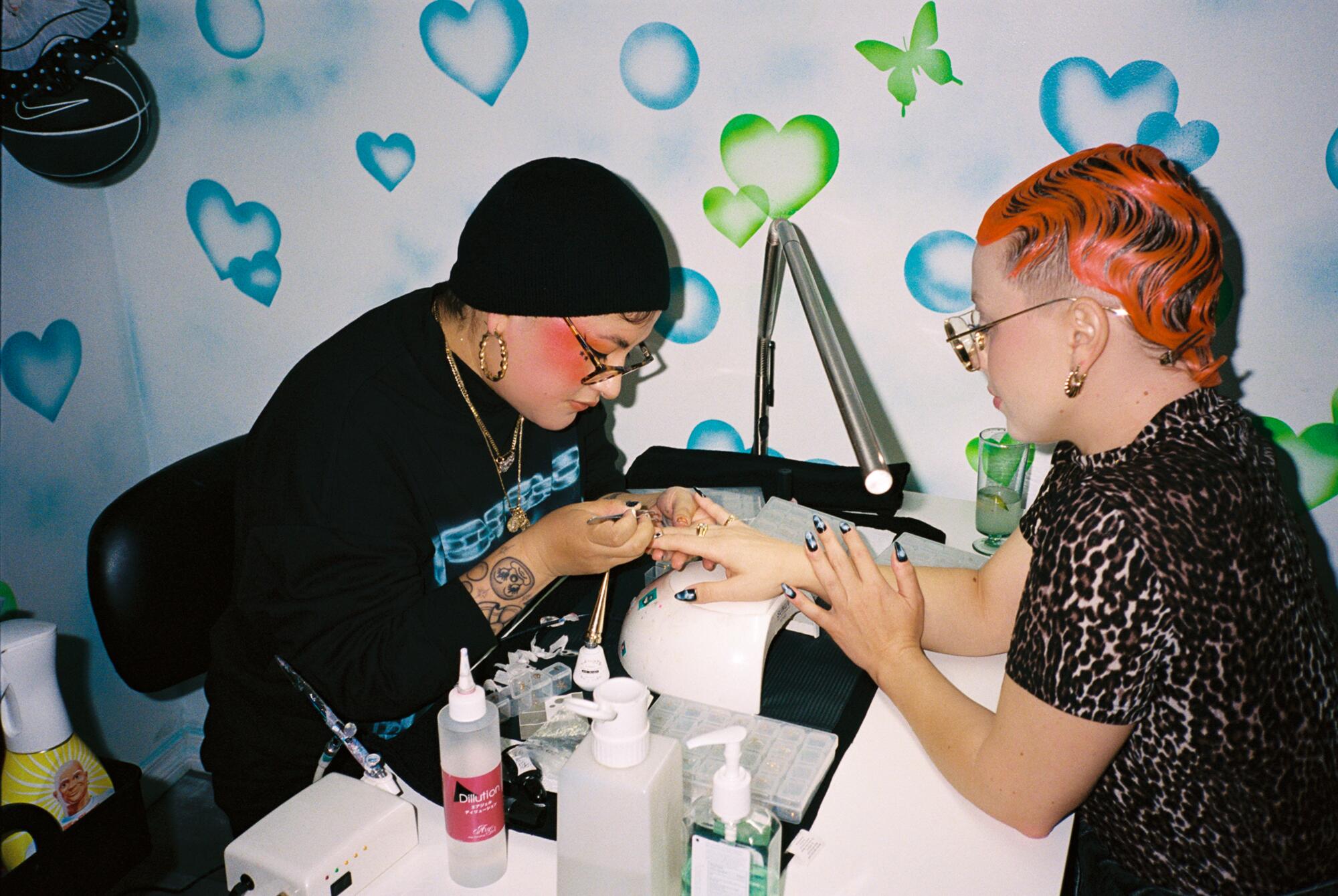
What made you want to do airbrushing yourself after falling in love with it as a teenager?
I went to Academy of Art and then I went to FIDM [Fashion Institute of Design & Merchandising]. I always knew I wanted to be an artist. I was spray painting when I was a kid and then I got arrested for it — I was a little delinquent [laughs]. I turned to airbrushing because it’s somewhat similar: compressed air. My first art tool was an airbrush gun. I took it out thinking I was going to be a pro at it, and then I sucked and was like, “OK, back in the box.” Airbrushing requires a lot of technical skills. When I was going to art school to be a graphic designer, airbrushing was just in the back of my mind — until it came back up when I started doing nails.
What about airbrush do you find so beautiful? I romanticize it too. I think a lot of people do. It’s nostalgic. It’s rooted in our memories, or our culture or the way that we grew up. What is it for you?
I love it because it’s dreamy. You can create soft, sharp and blurred patterns with it. You can create something super hyper-realistic, and you can create something super stencil-y. Anything can be airbrushed. It’s something nostalgic to me. It peaked in the early 2000s, late ’90s, when it was all over the American market. Now, taking it in a modern form, I think it’s really cool to have clients that are into it and really like the style. I’m in love with the idea of everything that came before it — with the shirts and the backdrops and the cars. There’s so much history behind it.
There’s something really interesting about airbrushing nails versus, like, a T-shirt because nails are worn on someone’s body 24/7 for as long as they last — as opposed to a piece of clothing that you can take on and off. Why do you think it’s special?
I am giving them a memento — like getting that T-shirt that commemorates that you went to the 1997 fair. When it comes to nails, I’m giving them something that they can remember. This is an airbrush nail like they haven’t gotten since the 2000s — or they haven’t gotten at all. I think it’s cool to give them something that is a little bit of me, give them something that I really treasure.
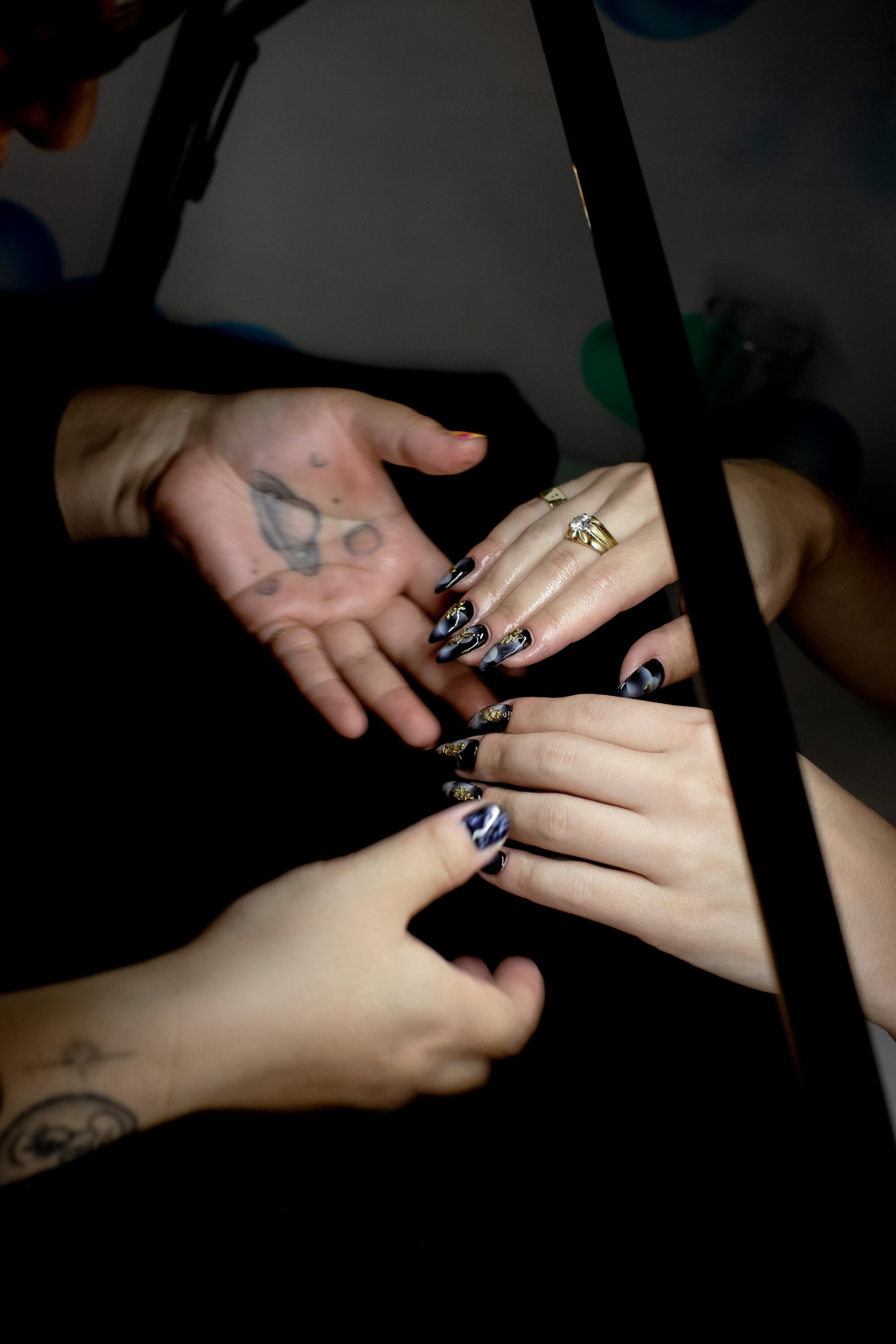
You mentioned that airbrushing is a very technical skill. When you’re airbrushing someone’s nails, what does it take?
It’s about control, about pressure. You have to learn how to control your pressure movements. It’s all about touch and feel. In that way you do have to be in tune with your body and how your muscle movements are, but it’s mainly control — which is big because I’m a Virgo. You learn how to create stencils and learn how to layer things (I create my own stencils). It’s about giving people variation, learning how to work with different elements, because it’s not just the airbrushing itself — you have to thin the paint down, you have to make sure it’s properly diluted, you have to control the trigger with the pressure points and the pullback. You need to learn that. It’s all about — like with any beauty thing — your color palette. With airbrushing, you can layer everything. I think that’s what’s super fun about it: You can create so much depth in a nail from different opacities of color, where you can’t get that with a flat paint.
What is your airbrush style inspired by?
I’m putting something that I want and I like on a nail. I don’t really give my clients much say [laughs].
Sorrow looks exactly like any other day at the beach in L.A., another boring thirst trap
Yeah, because you’re an artist.
It’s funny I’m in the beauty industry because I never thought of myself as a beautiful character. I just really had a sense of myself when it came to what I liked to wear: something flashy. I love gold. I love airbrush. So now I put all those things onto nails. I’m a first-generation Mexican American, everybody in my family is from Mexico. Growing up, I’ve always been in two places at once. An American student at school and then coming back home seeing these very Catholic images with a lot of gold. Seeing my grandma pray the rosary every morning. When I do nails, it’s like I’m taking bits and parts of that. I like my religious aspects on a nail and using airbrush for the background. It has more meaning behind it, like you’re blessed. You’re getting blessed nails.
Airbrushing is an art. Nails are an art. These are art forms that have been uplifted and cherished in communities of color for a long time but don’t always get the same level of respect in the “fine art” world. What do you think about this?
Definitely. I think that because it’s coming from a Black or brown person’s hands, it’s not as respected. I’ve always been inspired by this Chicano-style artwork, but they’re not seeing the beauty in it. I’m now seeing a lot of artists bring airbrush to the forefront and there are galleries that are opening their arms to it and it inspires me because I want to do that — I want to bring it to a different medium and showcase where I come from. But it was never at the forefront, you know? Getting that airbrush shirt, some people would never be like “Oh, that’s fine art.” The artistry gets overshadowed by where it’s coming from.
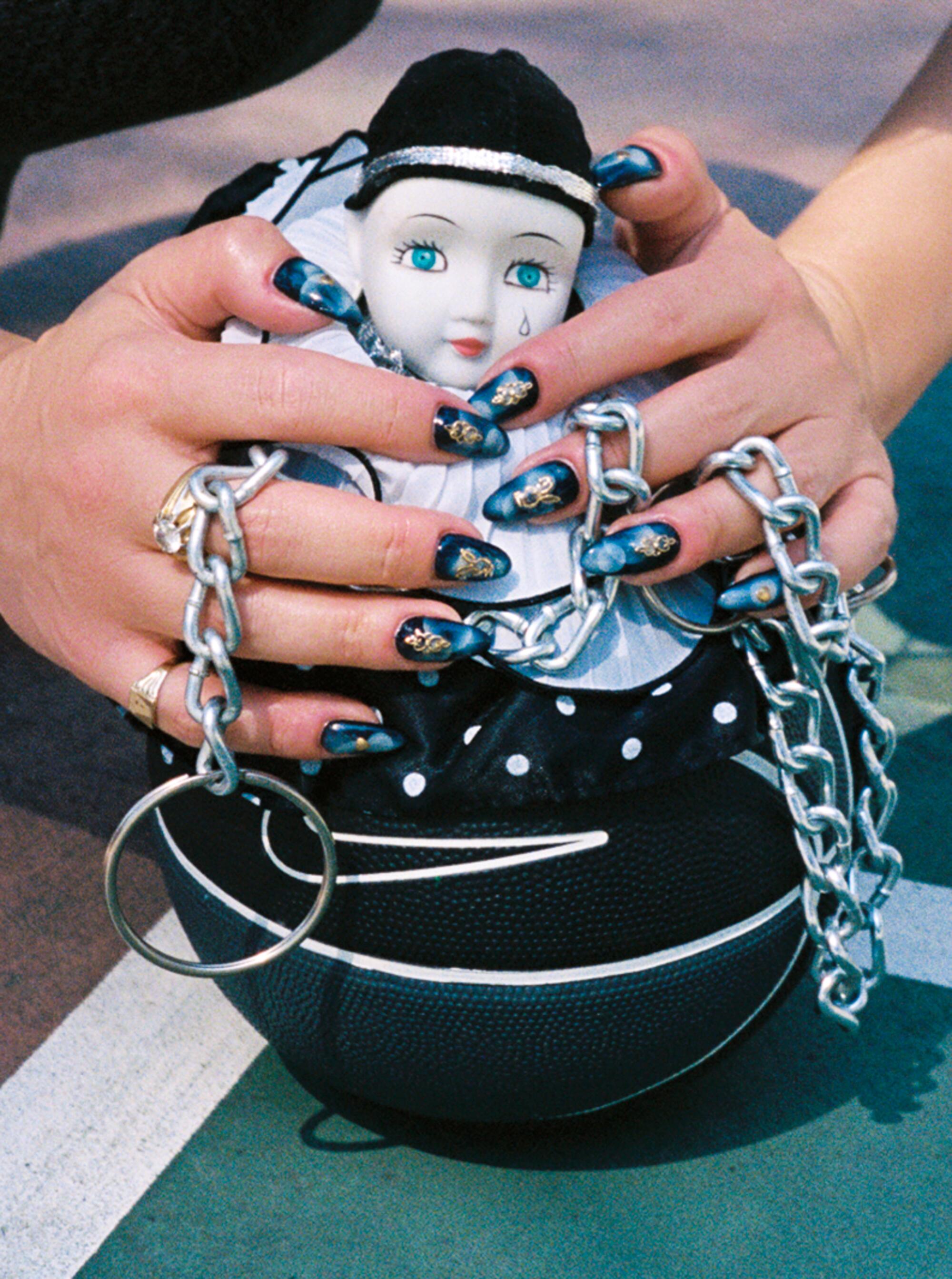
What beauty do you wish other people saw in it? Or does it even matter?
They don’t have to understand it. If people see something in it that they can also relate to, I think that’s amazing. I think relating to something is more important [than understanding it]. If someone is like,This is sick because I can see myself in it, this reminds me of my memories, or the `’90s, or this lowrider or this part of my childhood, or whatever — I think that’s what’s cool.


